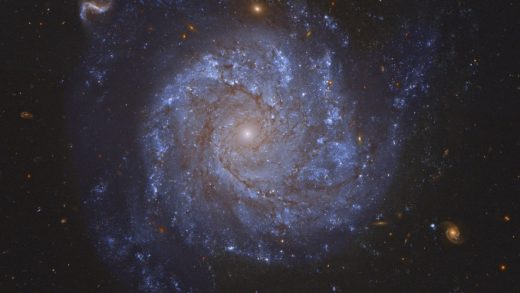:format(webp)/https://www.thestar.com/content/dam/thestar/entertainment/television/2022/10/26/why-are-we-so-fascinated-by-vampires/_1_luke_hutchie_as_ezra.jpg)
When Luke Hutchie dreamed up an idea for a television show about a gay vampire, he says it became “the thing that just wouldn’t die” — not unlike its immortal protagonist, the eponymous “Ezra,” who leaves his undead family behind to mingle with humans.
In fact, the vampire TV show as a genre refuses to, well, stay buried.
Just think of the boom this month, already a key time for paranormal programming with Halloween approaching. The first week of October brought the debuts of comedy “Ezra” on OutTV; prestige project “Anne Rice’s Interview With the Vampire” on AMC; comedy “Reginald the Vampire” on Prime Video; and child-vampire drama “Let the Right One In” on Crave.
Add “Vampire Academy,” a young adult drama set at a vampire boarding school, which hit W Network in September.
That plethora isn’t surprising to TV and pop culture professor Robert J. Thompson, director of the Bleier Center for Television and Popular Culture at Syracuse University.
“If someone were to come up to me and say, ‘Why are there so many shows about vampires?’ my first answer would be, ‘I’m surprised there aren’t more,’” he said in a phone interview.
After all, the Western European fascination with the creatures dates back at least to the late 18th and early 19th centuries, when Coleridge and Byron wrote poems about them and Byron’s doctor, John William Polidori, created “The Vampyre,” attributed as the first vampire story written in English and a forerunner of Bram Stoker’s hugely influential 1897 novel “Dracula.”
In TV terms, vampires didn’t really start to gain a fanghold until the 1960s, in part because the morality codes of the 1950s discouraged the sexuality we associate with vampire characters today, according to Thompson.
(Mind you, the book “Un-Dead TV: The Ultimate Guide to Vampire Television” dates the small-screen blood sucker to 1949, when Bela Lugosi appeared dressed as the 1931 movie “Dracula” on “The Texaco Star Theater.”)
Thompson mentions the vampire Grandpa on 1964 sitcom “The Munsters” while, in 1967, the addition of the undead Barnabas Collins — played by Hamilton’s Jonathan Frid — turned gothic soap opera “Dark Shadows,” which debuted in 1966, into a big hit for ABC.
The decades since have brought numerous vampire shows, some of which really sank their teeth into popular culture: think “Kolchak: The Night Stalker” (1974); “Forever Knight” (1992), “Buffy the Vampire Slayer” (1997) and “Angel” (1999); “True Blood” (2008) and “The Vampire Diaries” (2009); “The Strain” (2014) and “What We Do in the Shadows” (2019) as examples.
And it’s a trend that seems to have limitless life.
“They are the most human of monsters,” said Andrew Hinderaker, creator of the TV adaptation of Swedish novel “Let the Right One In.” “They look like us. They talk like us. They attack in the most intimate of ways … And that, to me, makes them feel dangerously close,” he said during a Television Critics Association Q&A.
Alan Taylor, who directed the first two episodes of “Interview With the Vampire,” made a similar observation on a TCA panel for that show.
“It’s one of the few monsters that is also elegant and beautiful and terrifying, so it’s that duality that is, I think, eternally fascinating … it’s a rare monster that lets you spiral deeper into humanity,” he said.
Indeed, as this latest crop of vampire shows demonstrates, you can project just about anything you want onto the “blank slate” of the vampire, in Thompson’s words.
In “Reginald the Vampire,” the lead character, played by Jacob Batalon (“Spider-Man”), is an ordinary joe who works at a slushie joint, gets fat-shamed by one co-worker and yearns for another whom he thinks is out of his league when he inadvertently becomes a creature of the night.
“We all sort of have preconceived notions of what it’s like to be a vampire,” but the show’s producers “put those tropes on (their) head,” Batalon said during a TCA panel. “(I) don’t have shiny skin … I don’t have long, flowing hair. I’m not really tall. But here we are, I’m the hero of the story.”
In “Interview With the Vampire,” the main character, Louis de Pointe du Lac (Jacob Anderson, “Game of Thrones”), is a Black man in turn-of-the-20th-century New Orleans so, along with his unease at his newly undead status, he has to navigate racism and homophobia after he becomes the companion of the seductive vampire Lestat de Lioncourt (Sam Reid).
Rolin Jones, who created the series, said he wanted to write it as “a very excitable, aggressive, toxic, beautiful love story” between Louis and Lestat.
There’s also a love story at the heart of “Let the Right One In,” not just between 12-year-old vampire Eleanor (Madison Taylor Baez) and her friend Isaiah (Ian Foreman) — the relationship at the centre of both movie versions of the novel — but between Eleanor and her father Mark, played by Oscar nominee Demián Bichir.
The most important thing for Seith Mann, who directed the show, was “exploring the lengths that people will go to for the love of their child.” What Mark does to get Eleanor the blood that keeps her alive could be seen as “monstrous,” but there’s also a humanity in it, he said.
These TV series are part of a transition that has seen vampires go from terrifying villains — “the ‘I vant to suck your blood’ kind of thing,” Thompson said — to “sometimes hero and erotic hero at that.”
But there’s always been something erotic about vampires, he added. “What is the principle of attack of a vampire? It puts its mouth on your neck. That’s a pretty sexual act … the ultimate hickey.”
Of course, the level of eroticism depends on the show, as does the level of adherence to vampire tropes like having to avoid sunlight, garlic and holy water, or not being able to see themselves in mirrors or eat human food.
Hutchie, for instance, said he threw out the rules when it came to making “Ezra.” His 400-year-old vampire character feeds in the traditional way, by killing people — although he tries to justify the deaths — but also carries a flask of blood to mix with his iced oat milk lattes or drizzle on his popcorn. (Hutchie said the “blood” popcorn was “really good. All of us were eating it.”)
Hutchie’s intention was not necessarily to make a vampire show per se, he said, but a scary comedy that would appeal to a horror-loving queer audience with a queer character in the lead.
But Ezra’s queerness isn’t his defining characteristic; it’s how he finds himself through his interactions with non-vampires. “You watch him experience new things and learn and eventually realize, you know, ‘I’m the same as them. We just come from different places,’” Hutchie said.
And that’s sort of the appeal of the vampire in a nutshell.
“You (take) any human relationship and add time, and it deepens the questions and the agonies and the absurdities,” said director Taylor of “Interview With the Vampire.” “I think vampires are fascinating because they let us talk about what challenges us as humans.”
JOIN THE CONVERSATION
:format(webp)/https://www.thestar.com/content/dam/thestar/entertainment/television/2022/10/26/why-are-we-so-fascinated-by-vampires/_2_reginald_the_vampire.jpg)



